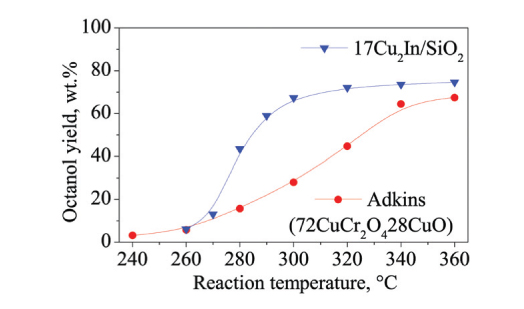Carboxylic Acid Reduction over Silica Supported Cu, Ni and Cu2In, Ni2In Catalysts
Keywords:
carboxylic acids, alcohols, hydrogenation, indium co-catalystAbstract
Hydroconversion of caprylic acid as model compound was studied in a flow-through fixed-bed reactor at 21 bar total pressure and 240-360 °C reaction temperature over various hydrogenating active phases: pure metal (Cu, Ni) and intermetallic compound (Cu2In, Ni2In) nanoparticles. Different silicas produced by dissimilar methods and a commercial γ-alumina were compared as appropriate supports. Catalyst precursors were activated in reducing H2 flow at 21 bar and 450 °C as routine pretreatment. Catalysts of high activity and selectivity for alcohol production can be obtained by varied the supports, the main metals and their indium modified bimetallic forms. Diversity of catalytic behavior reflects the complexity of the surface reactions. Caprylic alcohol formation was substantiated to proceed through caprylic aldehyde intermediates, however it can be also dehydrated to dicaprylic ether or octenes over alumina support. Silica supports, especially a less compact variant seem to be more inert for side reactions than alumina. Different morphology of studied silicas can highly influence the catalytic performances taking place over different metal particles.
Downloads
Additional Files
Published
04.09.2014
Issue
Section
Materials science
License
Except where otherwise noted, articles in this journal are published under the Creative Commons Attribution 4.0 International License
